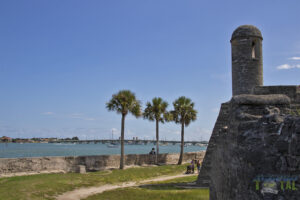As I’ve mentioned several times before, St. Augustine is one of those cities I never get tired of visiting. Every trip surprises me with its magic. The historic charm of St. Augustine can be felt in every corner: cobblestone streets, colonial buildings, and an atmosphere that instantly transports you to another time. So here I’ll share the walk I usually take whenever I visit—whether I’m showing family or friends around for the first time, or just enjoying a different kind of day trip from Orlando (our home). Of course, if you’re coming from farther away, I definitely recommend staying at least one night. Experiencing the historic charm of St. Augustine under the moonlight is truly something else!
I usually park near the St. Augustine and St. Johns County Visitor Information Center. It’s super convenient and right at the entrance to the historic district. From there, walking is by far the best way to explore the city. Don’t skip the Visitor Center—it has a small museum, restrooms, and even a shop for souvenirs.
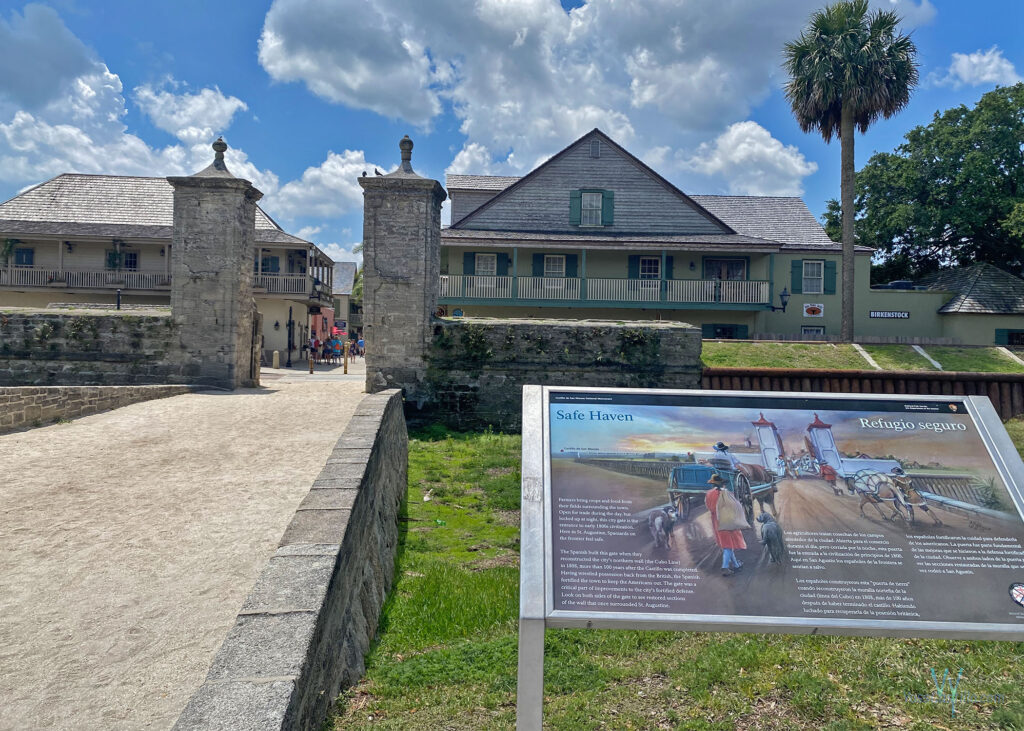
Just steps away, you’ll find the Old City Gates, which feel like the official entrance into the heart of St. Augustine. Crossing them always gives me a thrill, because right after that you enter the famous St. George Street, a pedestrian-only street lined with shops, restaurants, and museums. It’s perfect for strolling slowly without worrying about cars—though you do need to keep an eye out when crossing the small streets that intersect.
Along the way, it’s impossible not to stop at a museum or two. Look out for the Oldest Wooden Schoolhouse Museum, where you can still “hear” the teacher calling the students, or the St. Augustine Pirate & Treasure Museum, which is especially fun for families. Honestly though, just walking down St. George Street feels like walking through a living museum.
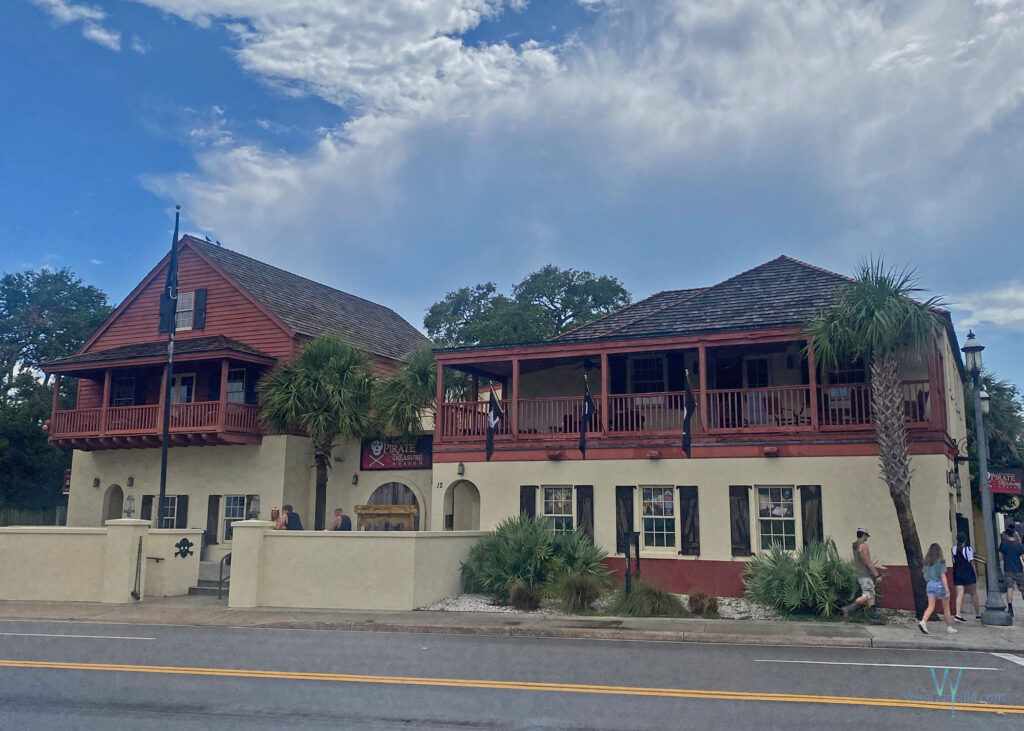
Food is a big part of the experience too. There’s plenty to choose from—pizza, sandwiches, burgers, seafood, and bakeries. On my last visit, I tried Prohibition Kitchen, and it was excellent. The restaurant is themed after the 1920s Prohibition era, when alcohol was banned, and people created hidden speakeasies. It’s got a great vibe and delicious food.
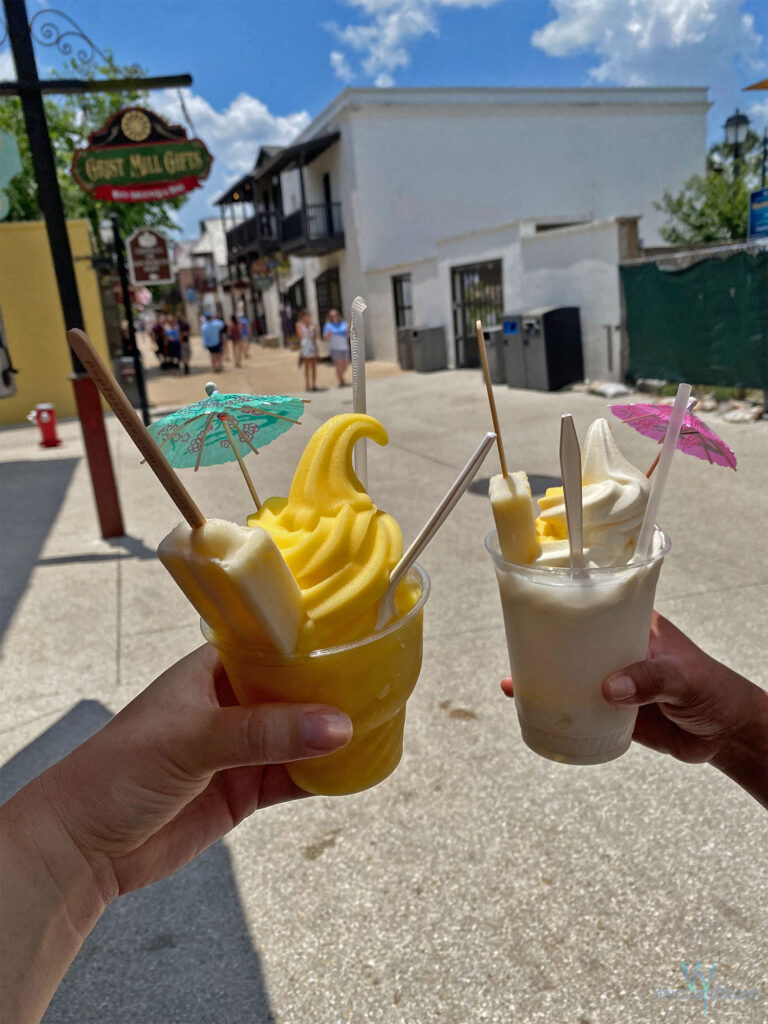
For those with a sweet tooth, there are two must-stops: The Original Likit, famous for its homemade ice cream, and Whetstone Chocolates, a beloved local shop that even offers tours where you can learn about the chocolate-making process. And if you do stay overnight, take some time to hop from restaurant to restaurant—most have live music in the evenings, which adds to the magic.
If you’re looking for something different at night, ghost tours are very popular in St. Augustine. We did one once, and while we didn’t exactly feel any spirits around, the guide was fantastic at telling stories and sharing historical facts. For example, we learned where the phrase “saved by the bell” comes from—it dates back to colonial times when a strange virus sometimes caused the heart to stop briefly, making people think someone had died. To prevent burying people alive, they would tie a string to the person’s hand connected to a bell above ground. If the person woke up, they could ring the bell and literally be “saved.”
As I keep walking along St. George Street, I eventually reach the Plaza de la Constitución, the city’s heart since colonial times. From there, I like making a quick detour to visit Flagler College. This impressive building was once a luxury hotel in the late 19th century and is now considered one of the architectural jewels of St. Augustine. Guided tours are available if you want to learn more about its history and beauty.
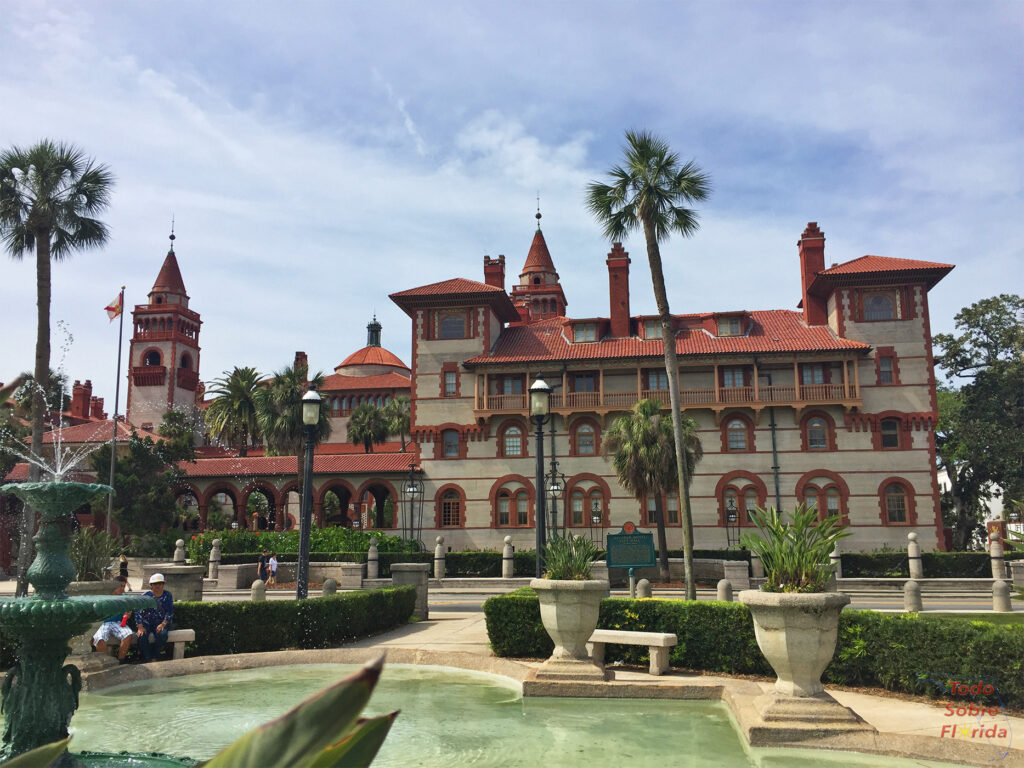
Right across from Flagler College is the Lightner Museum. Beyond its collection of art and historical objects, the building itself is stunning. Don’t miss the massive central hall, which once housed the largest indoor swimming pool in the world.
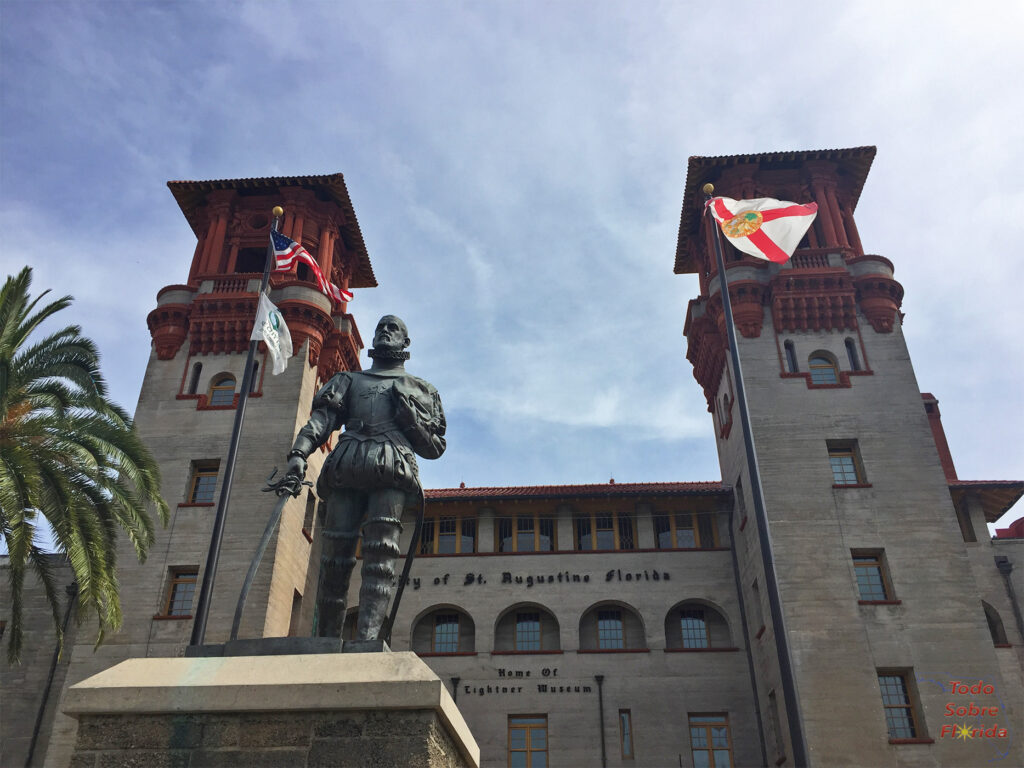
To wrap up my stroll through the historic charm of St. Augustine, I love walking along Avilés Street, the oldest street in the United States. It’s full of art galleries, colorful facades, and plenty of photo-worthy corners. Here you’ll also find the Spanish Military Hospital Museum.
When it’s time to head back, I take the scenic route along Matanzas Bay, a beautiful walk that runs from the Bridge of Lions to the Castillo de San Marcos, the iconic Spanish fortress that has stood for centuries. From there, it’s a short walk back to the Visitor Center, with the feeling of having traveled back in time and rediscovered, once again, the oldest city in the United States. If you’re lucky, you might even catch dolphins playing in the bay at sunset—it’s the perfect ending to the day.
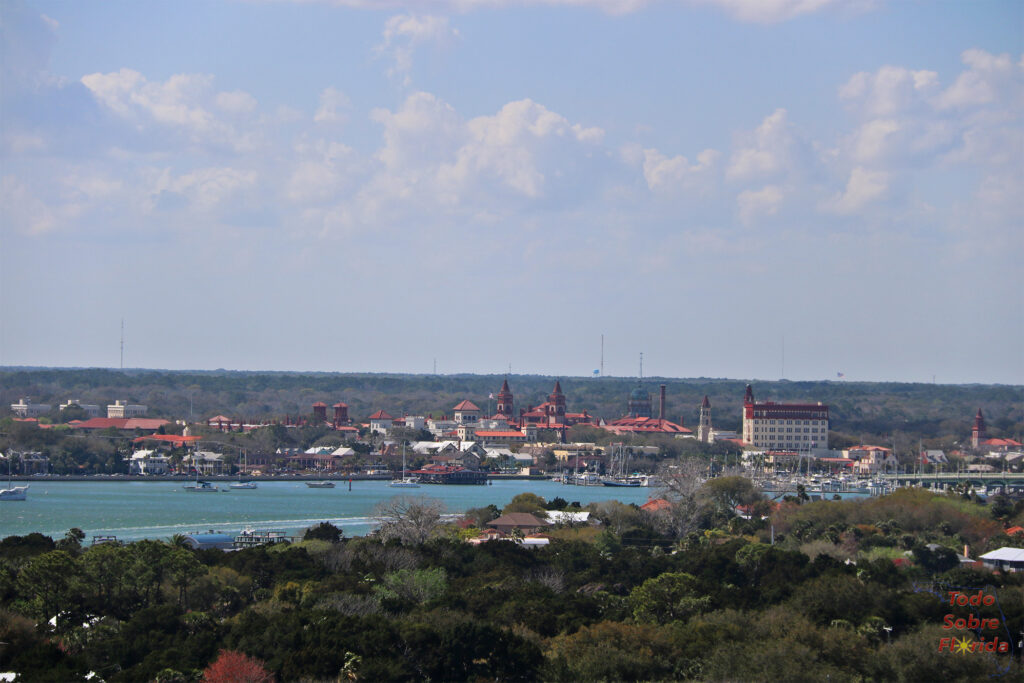
Before you leave, I also recommend visiting the St. Augustine Lighthouse & Maritime Museum. You can climb to the very top (wear comfy, closed-toe shoes!) and enjoy sweeping views of the city. The lighthouse also has its own museum and is located just across the Bridge of Lions, not far from the historic center.

